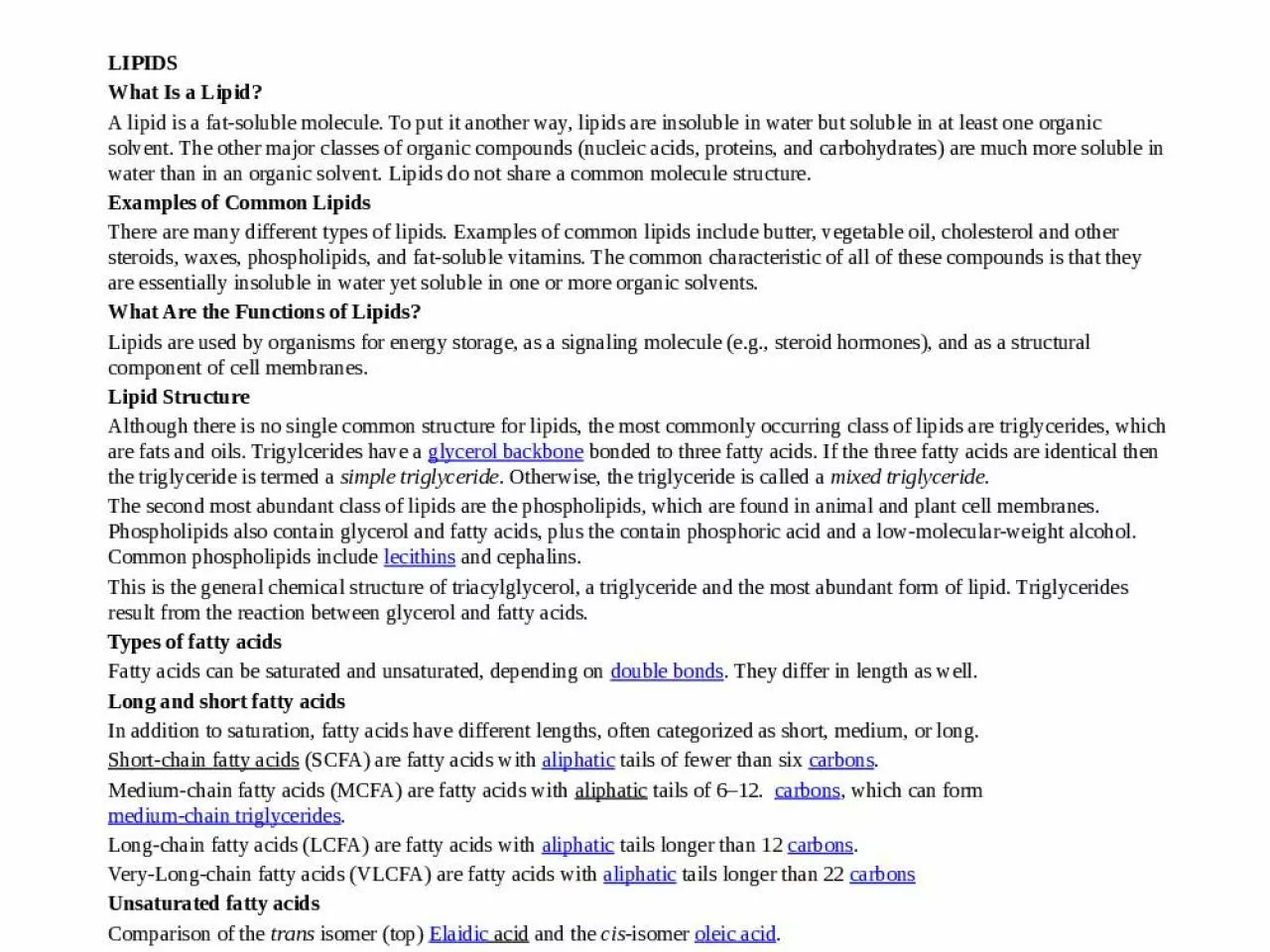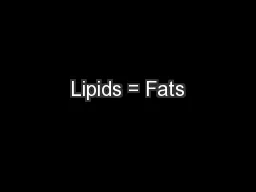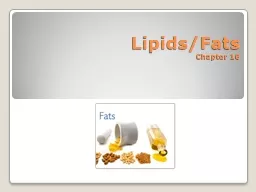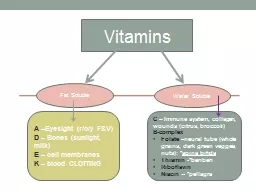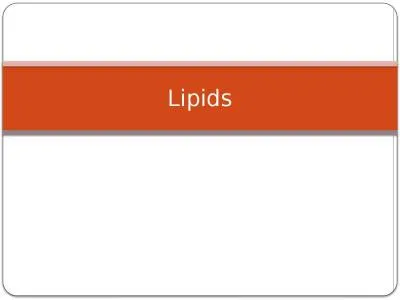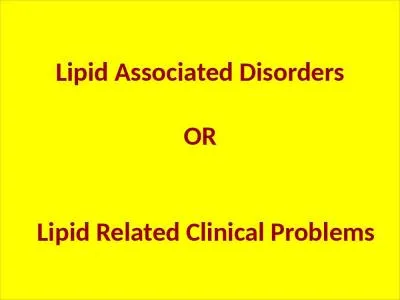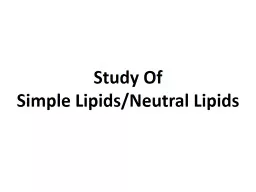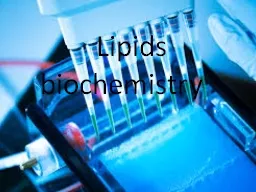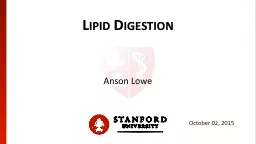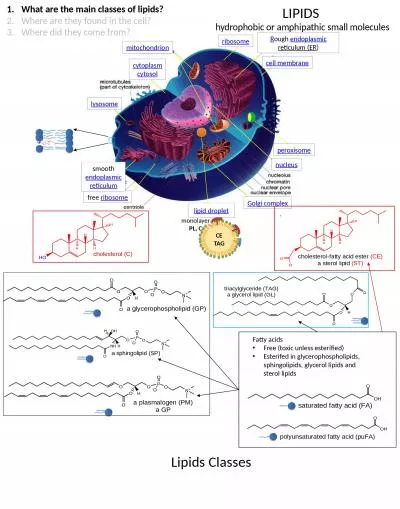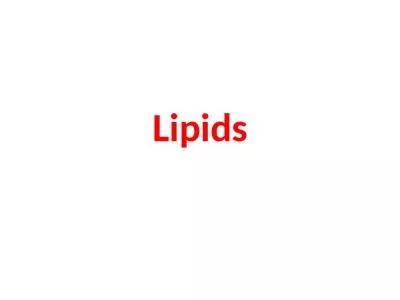PPT-LIPIDS What Is a Lipid? A lipid is a fat-soluble molecule. To put it another way, lipids
Author : avi989 | Published Date : 2024-09-18
Examples of Common Lipids There are many different types of lipids Examples of common lipids include butter vegetable oil cholesterol and other steroids waxes phospholipids
Presentation Embed Code
Download Presentation
Download Presentation The PPT/PDF document "LIPIDS What Is a Lipid? A lipid is a fat..." is the property of its rightful owner. Permission is granted to download and print the materials on this website for personal, non-commercial use only, and to display it on your personal computer provided you do not modify the materials and that you retain all copyright notices contained in the materials. By downloading content from our website, you accept the terms of this agreement.
LIPIDS What Is a Lipid? A lipid is a fat-soluble molecule. To put it another way, lipids: Transcript
Download Rules Of Document
"LIPIDS What Is a Lipid? A lipid is a fat-soluble molecule. To put it another way, lipids"The content belongs to its owner. You may download and print it for personal use, without modification, and keep all copyright notices. By downloading, you agree to these terms.
Related Documents

